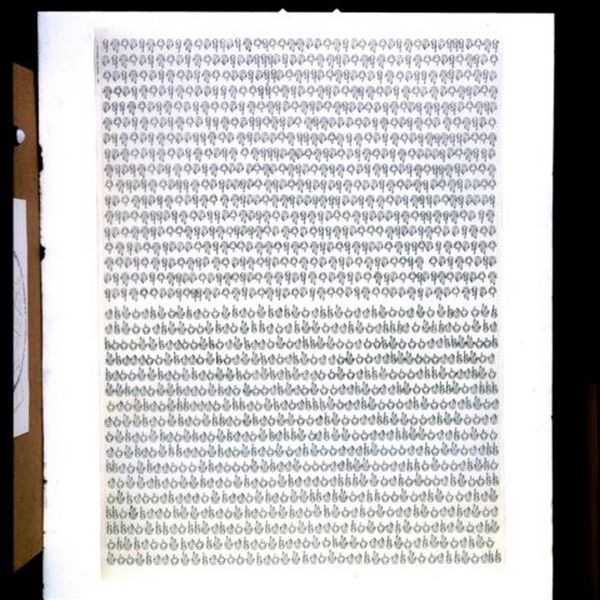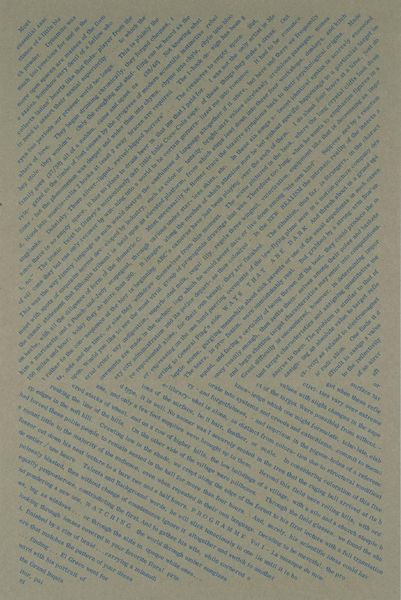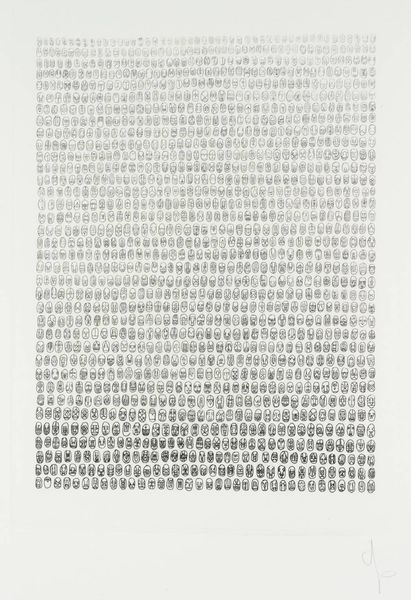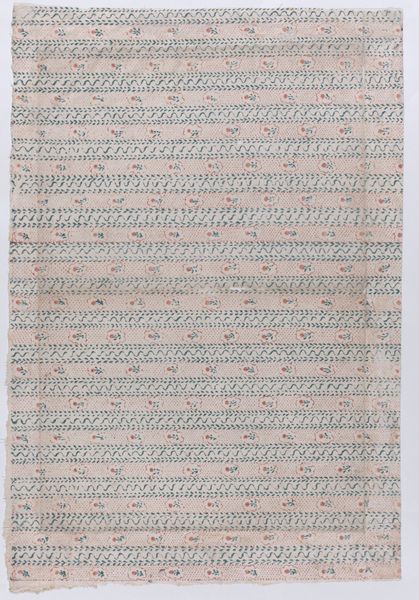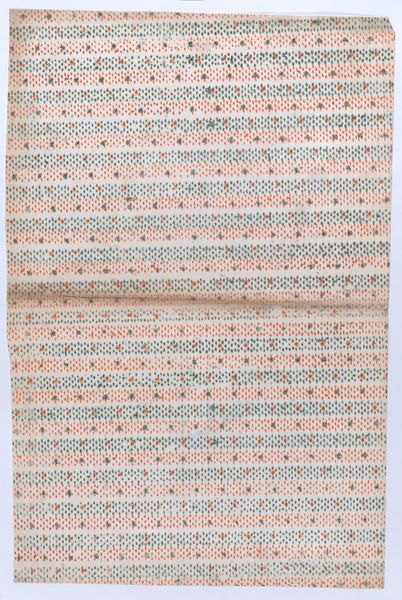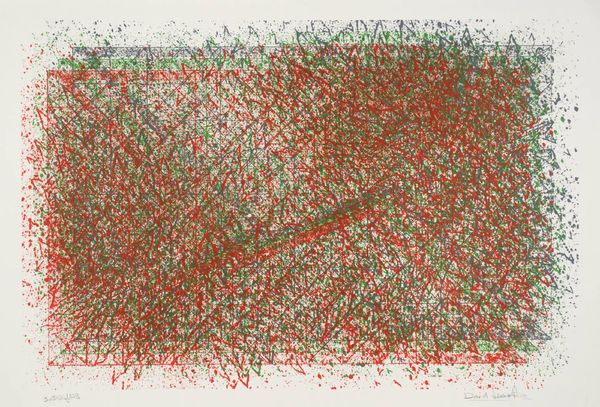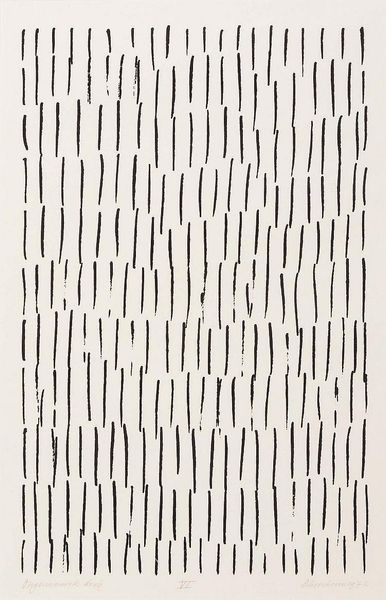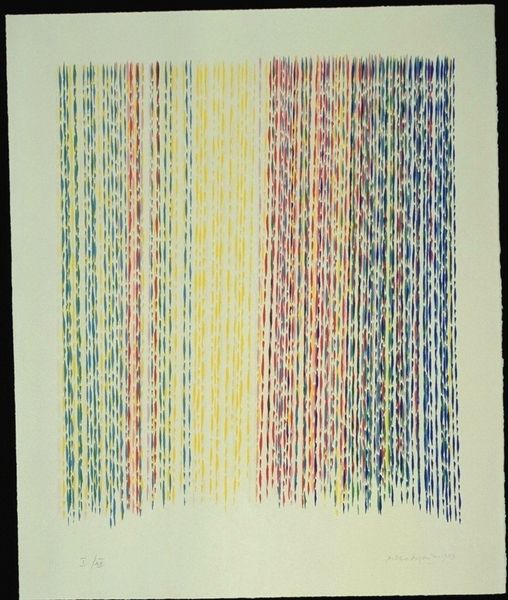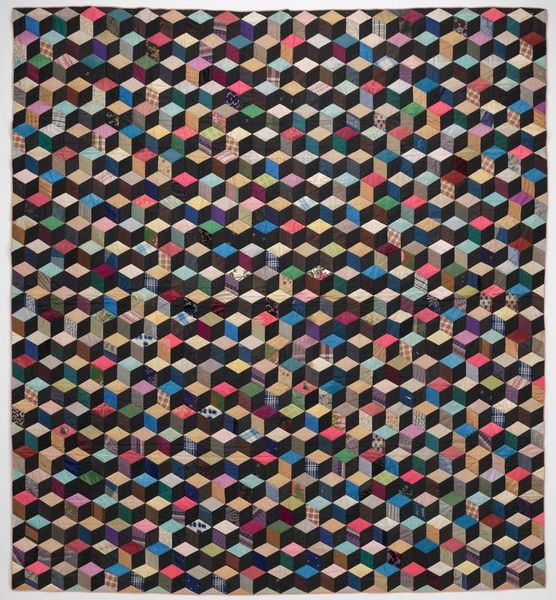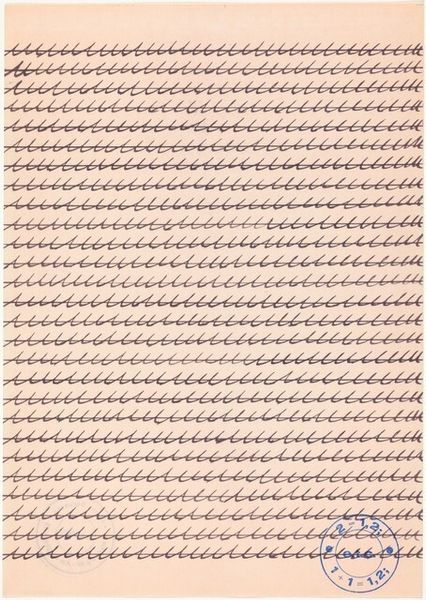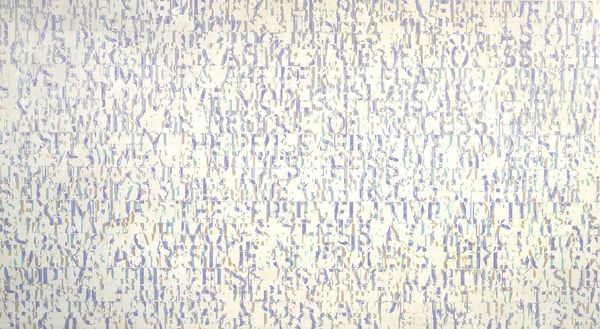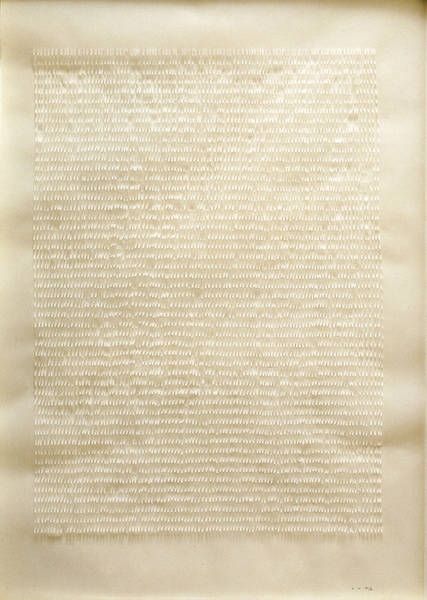
drawing
#
drawing
#
op-art
#
op art
#
geometric
#
geometric-abstraction
#
abstraction
#
line
#
modernism
Dimensions: overall: 74 x 58.8 cm (29 1/8 x 23 1/8 in.)
Copyright: National Gallery of Art: CC0 1.0
Curator: My first impression is… static, yet also secretly kinetic? It's like a field of hidden potential energy, a very subtly shifting landscape. Editor: You know, it's funny you say that. Barry Lewis created this untitled drawing in 1976, working in the Op Art style with simple line work. What's striking is that he actually hand-drew all these waveforms on graph paper, there's a certain obsessive quality in that, don't you think? Curator: Totally! The grid brings this strange order, like the pulse is regulated but by whom, or what? I wonder if there's a reference to, I don't know, societal control? Or even medical data visualization techniques and the potential, in those circles, to misrepresent data in a way that serves one purpose more than it speaks of a deeper reality. Editor: The visual language definitely connects with discourses of standardization and monitoring—it emerged during an era grappling with increased technological surveillance. It reminds me of Foucault’s analysis of the panopticon: the individual becomes acutely conscious of being watched and regulated, as power pervades all levels of society. Curator: Maybe the waveform represents anxiety or social restlessness visualized and rendered with a sense of playful curiosity. Kind of like "we are living inside a cardiograph, it's terrible... AND beautiful!" Editor: In its meticulousness, maybe Lewis invites us to pause and think about systems that are supposedly neutral, but reflect the inherent biases that produce them and keep them in operation. But, by the way, tell me something, does the rhythm it presents invoke sound to you at all? Because, somehow, I perceive a low frequency sort of ambience... Curator: Well, that makes sense, actually. But rather than something menacing like surveillance, it's nice if people see a sense of sonic experimentation within its formalism... like a silent rave in the language of science. Maybe art's real rebellion comes from the pleasure of experiencing patterns breaking. Editor: The hand-drawn nature resists full industrialization, maybe hinting towards resistance? This image provides fodder for endless contemplation! Curator: I'd love for others to pick it up from here and interpret it through their own context, perhaps a soundtrack. Editor: Right, I find myself seeing how abstraction has always provided us with this unique opportunity. I leave here ready to analyze every little piece of design.
Comments
No comments
Be the first to comment and join the conversation on the ultimate creative platform.
